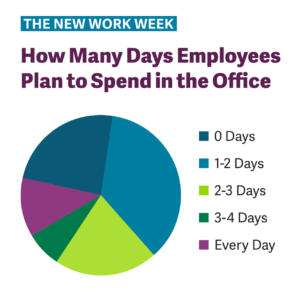 Before I joined Hixny, I worked from home for several years. So when word came down from the state government that Hixny needed to disperse our workforce during the pandemic, I had no doubt that it was both possible and doable.
Before I joined Hixny, I worked from home for several years. So when word came down from the state government that Hixny needed to disperse our workforce during the pandemic, I had no doubt that it was both possible and doable.
Now that New York has begun its phased re-opening, it’s been a little harder to figure out how to safely bring everyone back together. We could have simply reopened our office, making broad changes to follow social distancing and sanitization guidance—but we don’t have any idea what will happen next. The worst thing would be to push everyone to return to the building, create anxiety among the staff and then have to rush home again if cases increase.
I didn’t want to make such a critical decision based on a data point of one—so I decided to consult our staff, using a survey to get a sense about how everyone was thinking and feeling as our first potential reopening date approached.
What We Learned
Nearly everyone in the company took the survey. My perspective had been that people seemed very efficient and productive—perhaps even more than they were in the office—and that most appreciated the flexibility to blend life and work to meet their personal needs.
What I learned was even more interesting. Some staff members are essentially working split shifts so that they can make the most of quiet mornings, help kids with virtual learning for a few hours and then return to work later in the day. Others have family members whose health conditions or workplace plans have kept them home nearly continuously since March—with plans to stay there as much as possible until there’s a vaccine.
While it’s not always possible to weigh every situation and make the best decision for everyone, it’s critical to do that now. If we don’t, we run the risk of making people feel as if they are just a number. More importantly, we run the risk of people getting sick which has the potential to not only devastate employees’ lives, but to also destroy a small company that doesn’t yet have a great deal of redundancy.
By the Numbers
Here are some of the survey results and my observations, in case you find them useful in making your own reopening plans. Of our employees:
- 93% are comfortable or very comfortable working from home, and 96% feel able to do so for at least three more months—with the vast majority saying they can do so indefinitely. This tells me people have settled into routines that are supporting work/life harmony. And as anyone who’s worked from home knows, setting simple practices around “going to the office” and “leaving” each day make all the difference in establishing a good mindset.
- 88 to 100% feel as or more productive working remotely than in the office, in every area of their jobs. More than 90% also feel they have easy access to the tools and resources they need to be productive and get things done from home. What I’ve tried to do is be flexible with my staff and build mutual trust, so that I don’t feel the need to develop a strong opinion about how they do their jobs. It’s only when I see lost productivity or quality of work that I might intervene. Beyond that, flexibility and trust get the job done.
- 100% are comfortable using our Microsoft Teams platform to collaborate. And 90% said that our cell phone and internet allowances provide the right amount of help. Because we are a tech company, we’re aware that the tasks our staff regularly perform depend on business-level connections. That’s why when we first went out of the office, we gave each employee an allowance to ensure they could have the data access and transmission speeds they needed to work as seamlessly as possible. That decision has been critical to our continued success and to our staff’s positive experience.
- 92% feel that interactions with managers are as good or better now than they were in the office—and 95% of managers agree. At the same time, 88% of staff feel the same or better camaraderie and team chemistry working remotely and 46% find social isolation to be their biggest challenge. We couldn’t ask for better results. We’ve been trying to offset the isolation with virtual social activities, like trivia nights, and I’m lucky that our team is full of ideas for other options to keep morale up.
- 52% feel uncomfortable or very uncomfortable about potentially returning to the office in July. And whenever the employees return, 80% hope to work in the office no more than three days a week—with one to two days being preferred. This is our new normal. Some tasks must be done in the office, some can be done there and an increasing number can be done anywhere.
 That may mean jettisoning some things we once considered essential to save those that really are essential, like personal and client relationships.
That may mean jettisoning some things we once considered essential to save those that really are essential, like personal and client relationships.
Ultimately, we found that the vast majority of Hixny staff are doing very well at home and are not in a rush to get back to the office. Since so many have children, we can’t responsibly make a decision about returning until we know how schools—already pressed for space—plan to handle their re-openings this fall. At this point, with all of these things taken into consideration, we’ve set mid-September as our next opportunity to consider a return to the office.



